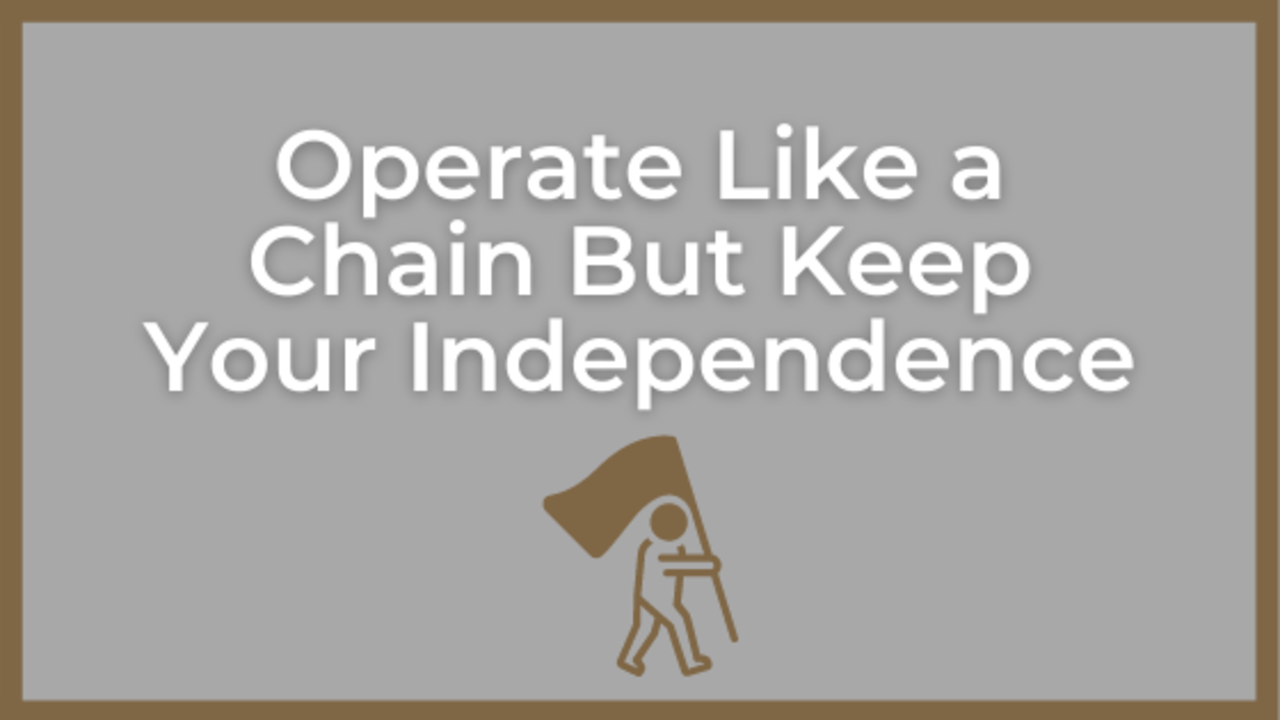Restaurant Management 101 for Independents

Restaurant management 101 is how chain restaurants kick independents’ butts. Their sales all too often are better than independents. They have better costs. They have managers who do their job. They have multiple thousands of locations with no owners in them. How do they do that? And more importantly, how can you do that?
When I talk about restaurant management 101, I mean having a system, a process, a way to doing anything and everything in your business. For example, when my son was in high school, he worked for one of the Yum Brands, a Taco Bell. When he first started, I would ask him how it was going, and he’d say things like, “Oh, fine. I learned how to rehydrate meat.”
While that is a discussion for another time, the fact of the matter is he had to do things a certain way so that the taco that came out of his location was the same taco at any other Taco Bell. Now, would any of us sit there and go, “Wow, Taco Bell is a quality product!”? Well, it is an extremely quality product in the sense that it's the same every single time. But it isn't the high-end stuff you have in your fine dining restaurant or customized casual concept. The product is not better, but it's consistent. And the unfortunate reality is for many of you, the chains kick your ass because they're consistent.
They put a system, a process, a way to make sure the guest gets the same experience, the same foods, same flavor profile, same portion control, same style of service, same level of cleanliness. There's a system for all of that. You can't just wing it as an independent. You have to follow what the chains do because, oh, by the way, when you do that, you make the money you deserve. It's absolutely amazing.
Think about another chain restaurant in your neighborhood. Everything your neighborhood “grill” produces is pretty much cooked in a frickin’ microwave. It's horrendous. And they're all over the country, all over the world. These kinds of chain establishments tend to have lines out the door (pre-COVID, of course). How is it that chains like this have food that sucks, that’s food comes from a microwave, have lines of people?
Because they suck the same way every single day.
And we laugh about it internally, like, ha ha, ha. But when I go to your restaurant, sometimes the portion is T H I S big and sometimes it's this big. It’s inconsistent because Sally worked the line, she grabbed French fries and put, you know, 4 ounces on a plate. Then Lurch one day grabs 8 ounces and throws it on a plate. It's that inconsistency that loses you money because it doesn't follow the recipe costing cards and also loses you sales because the guests can't figure out what dish they should count on getting when they visit. One day it’s good, one day it’s a lot, then the next day it seems like a smaller portion.
The way to solve this is restaurant management 101and create a system, a process, a way to doing anything and everything. Chain restaurants figured it out a long time ago. The secret to scaling – or just having time away from your restaurant – is to have systems. Impose your will without being there. Build a trainable system and get trainable results. Another bonus is that when you lose people, you don’t lose the knowledge. You can have a trained replacement. That's the key.
I cover Restaurant 101, putting systems in place and more in my book. Order your copy of Restaurant Prosperity Formula: What Successful Restaurateurs Do here.
You can also complete a free restaurant evaluation. It's a great way to identify immediate opportunities where you can make things better in your restaurant.
Be sure to visit my YouTube channel for more helpful restaurant management video tips.




